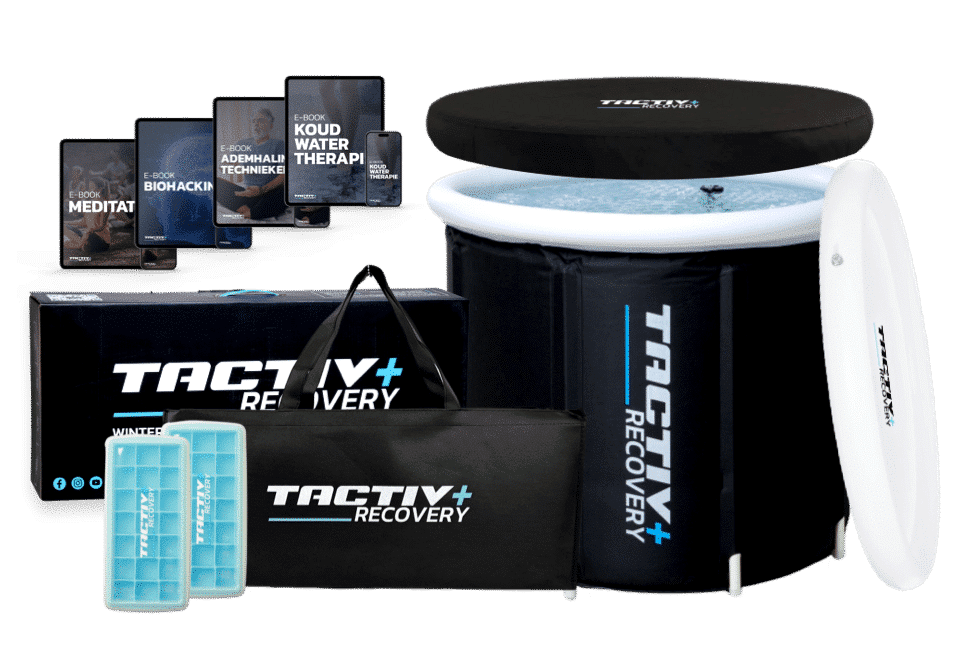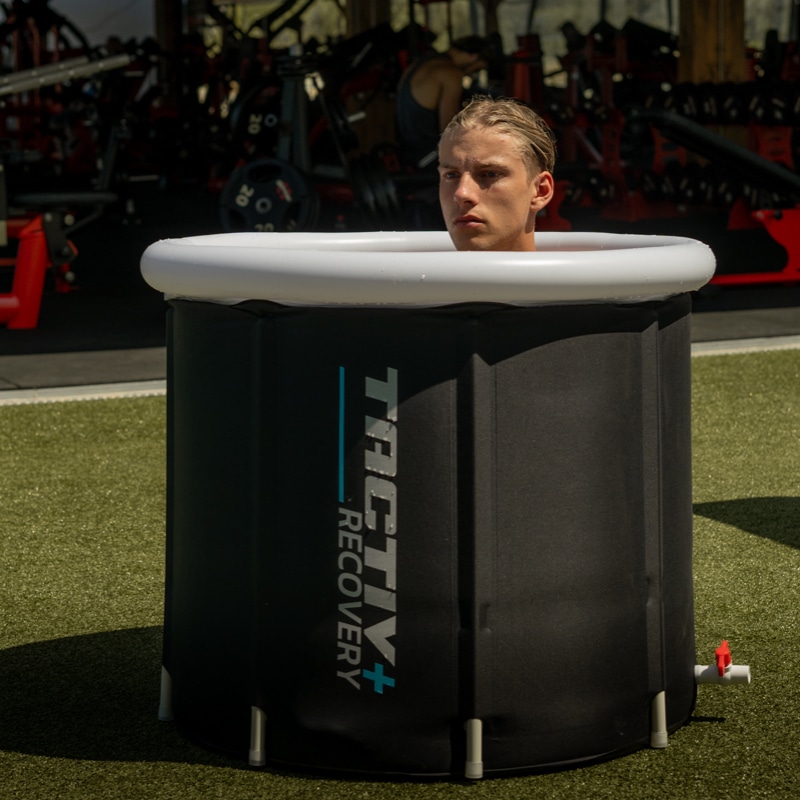What is cryotherapy?
Cryotherapy, also known as cold therapy, is a treatment that exposes the body to extremely cold temperatures. This can be done through a cryosauna or an ice bath, where the body is submerged in cold water for a few minutes.
The temperature can range from -110°C to -160°C, depending on the method used. The idea behind cryotherapy is that the cold temperature can reduce inflammation and pain, strengthen the immune system, and promote recovery.
Cryotherapy is not new and has been used in the medical world for decades to treat various conditions. It began in the 1970s in Japan and has since spread worldwide.
In recent years, cryotherapy has become popular in the sports world as a way to promote athlete recovery. This is because the treatment can help reduce muscle soreness and promote recovery after intensive training.
Although cryotherapy is primarily known as a treatment for athletes, it can also be used to treat other conditions. For example, it is used to reduce inflammation and pain in people with arthritis and other inflammatory conditions.
Although cryotherapy is generally considered safe, there are some risks and potential side effects associated with the treatment. Therefore, it is important to undergo the treatment under the supervision of a trained professional and discuss medical history to minimize potential risks.
It is important to remember that cryotherapy is not a miracle cure and that it is important to have a healthy lifestyle to achieve the best results. Although cryotherapy can help reduce inflammation and pain, it cannot specifically target the reduction of fat in a particular area of the body.
Cryotherapy scientifically proven: how effective is it really?
Although cryotherapy has become increasingly popular in recent years, there are still many questions about the effectiveness of the treatment. However, there is scientific evidence suggesting that cryotherapy can offer certain benefits.
A 2017 study, published in the Journal of Sports Medicine and Physical Fitness, found that cryotherapy could reduce muscle soreness after intensive training. Another study from 2015, published in the International Journal of Sports Medicine, showed that cryotherapy could promote recovery of muscle strength and fatigue.
Although there is some scientific evidence that cryotherapy can be effective, more research is needed to determine the full extent of the benefits.
What are the benefits of cryotherapy?
There are several potential benefits associated with cryotherapy. Here are some of the most commonly mentioned benefits:
- Reduces inflammation and pain: The cold temperature can help reduce inflammation and pain, which can be especially beneficial for people with conditions such as arthritis.
- Improves recovery: Cryotherapy can help reduce muscle soreness and promote recovery after intensive training.
- Strengthens the immune system: The cold temperature can stimulate the immune system, helping to fight diseases and infections.
- Improves sleep: Many people who have tried cryotherapy report that it helps them sleep better.
- Increases energy and alertness: The cold temperature can also help increase energy and alertness, which can be especially beneficial for people suffering from fatigue.
Are there drawbacks to cryotherapy?
Although cryotherapy can potentially offer many benefits, there are also some drawbacks to consider.
- Risk of frostbite: Exposure to extremely cold temperatures can lead to frostbite of the skin and other tissues. Therefore, it is important to carefully control the time and temperature to prevent this.
- Possible side effects: Some people may experience side effects such as dizziness, nausea, headaches, and increased heart rate after cryotherapy treatment.
- Not suitable for everyone: Cryotherapy is not suitable for people with certain medical conditions, such as high blood pressure, heart problems, and diabetes. It is also not suitable for pregnant individuals or those suffering from angina pectoris.
- Costs: Cryotherapy can be expensive and not affordable for everyone.
Therefore, it is important to discuss the potential drawbacks and risks of cryotherapy with a doctor if you have doubts before undergoing treatment.
Is cryotherapy dangerous?
Cryotherapy can be dangerous if not performed correctly. If the temperature is too low or the duration of the treatment is too long, this can lead to frostbite of the skin and other tissues.
Therefore, it is important to undergo cryotherapy only under the supervision of a trained professional. It is also essential to discuss your medical history with the professional before undergoing the treatment to minimize potential risks.
Can cryotherapy reduce belly fat?
Claims have been made that cryotherapy can help reduce belly fat, but there is little scientific evidence to support this claim.
Although cryotherapy can help reduce inflammation and pain, it cannot specifically target fat reduction in a particular area of the body. Additionally, cryotherapy does contribute to the production of brown fat. To reduce belly fat, it is important to exercise regularly and follow a healthy diet.
Conclusion
Cryotherapy can offer various benefits, such as reducing inflammation and pain, promoting recovery, and strengthening the immune system. Although there is some scientific evidence that this treatment can be effective, more research is needed to determine the full extent of the benefits.
However, there are also potential drawbacks and risks associated with cryotherapy, such as the risk of frostbite and possible side effects. Therefore, it is important to undergo the treatment under the supervision of a trained professional and discuss your medical history to minimize potential risks.
Finally, there is no scientific evidence to support the claim that cryotherapy specifically targets the reduction of belly fat. To reduce belly fat, it is important to exercise regularly and follow a healthy diet.
If you are interested in undergoing cryotherapy treatment, it is important to educate yourself about the potential benefits and risks of the treatment. Speak with a trained professional and discuss your medical history to minimize potential risks.
Overall, cryotherapy can be a safe and effective treatment for some individuals, but it is important to be well-informed before undergoing the treatment. It can be a valuable addition to a healthy lifestyle and help promote recovery after intensive workouts, but it is not a miracle cure for reducing belly fat.
ARE YOU LOOKING FOR AN ICE BATH?
Check out our freezing cold bundles now and receive an immediate discount with the code “TACTIV10“.

